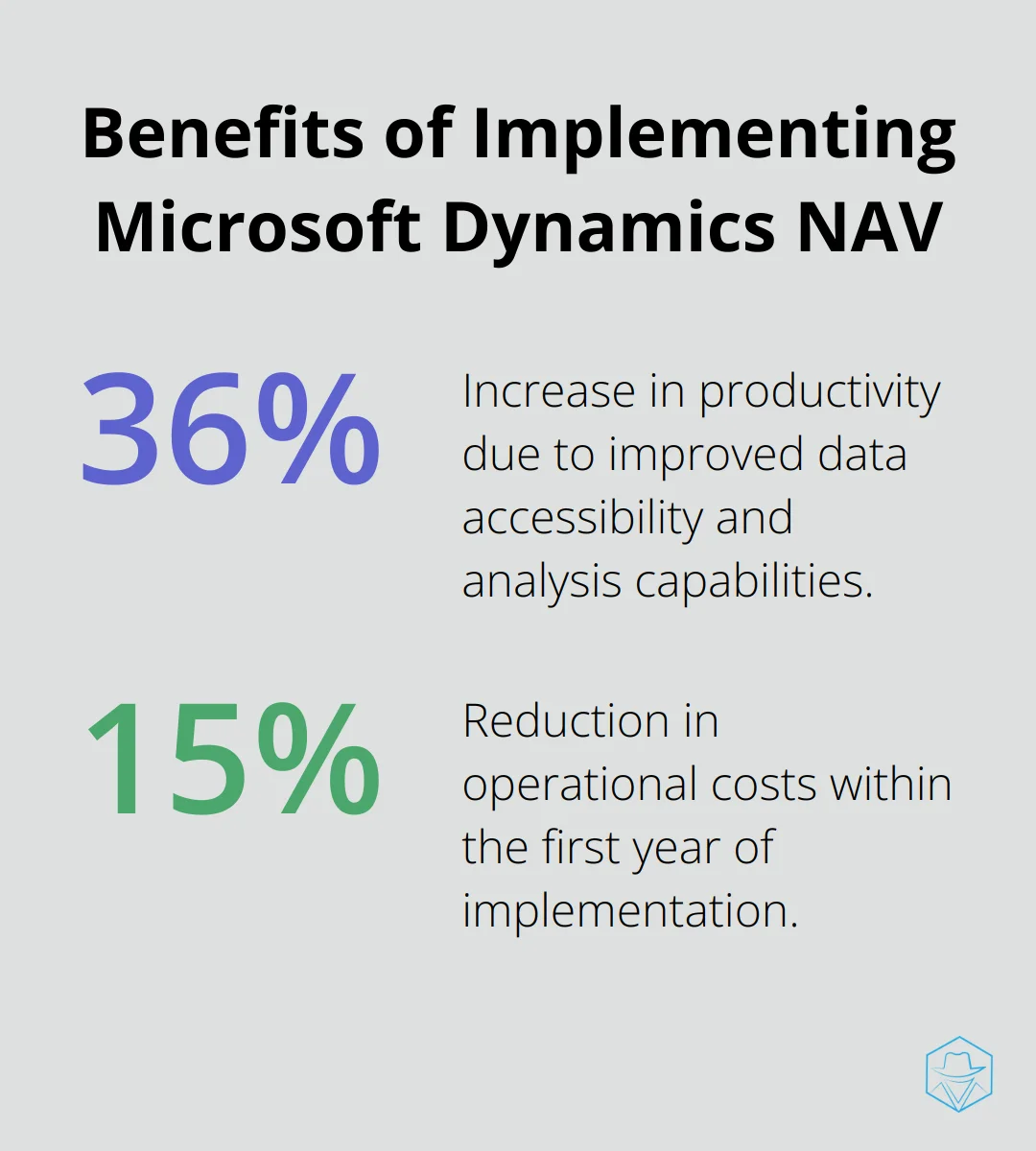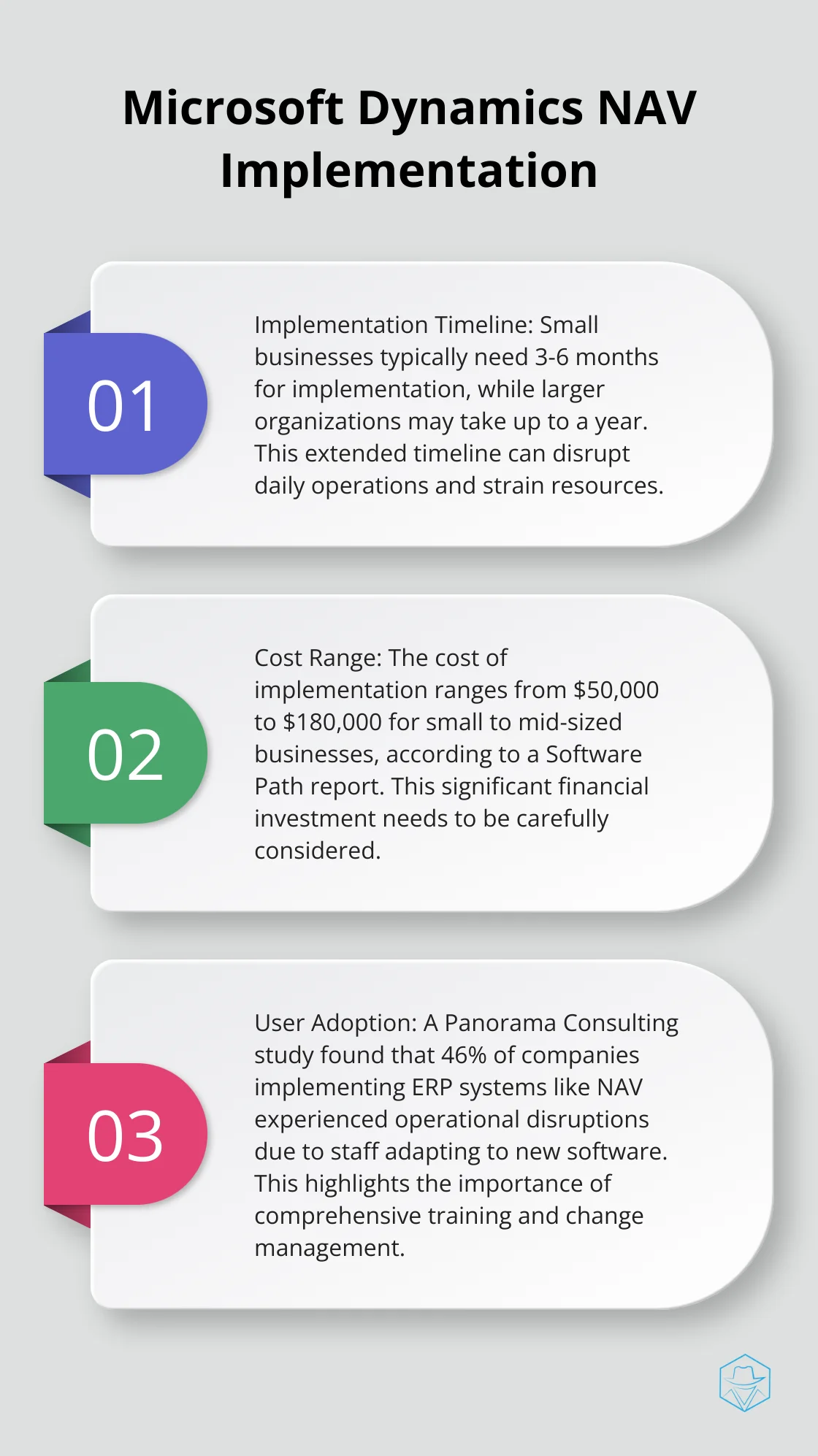Navision: Is Microsoft Dynamics NAV Right for You?

At Drop Cowboy, we understand the importance of choosing the right ERP solution for your business. Navision Microsoft Dynamics NAV has been a popular choice for many organizations seeking to streamline their operations.
In this post, we’ll explore the key features, benefits, and potential drawbacks of this powerful software. We’ll help you determine if NAV is the right fit for your company’s needs.
What is Microsoft Dynamics NAV?
Origins and Evolution
Microsoft Dynamics NAV, originally Navision, has been a key player in the ERP landscape since 1987. This robust software solution has adapted to changing business needs and technological advancements over the years.
Navision began as a Danish company, which Microsoft acquired in 2002. This acquisition marked the start of its transformation into Microsoft Dynamics NAV. Since then, NAV has undergone numerous updates and improvements, with each version introducing new features and enhanced functionality.
Core Features and Functionalities
NAV streamlines business processes across various departments. It offers comprehensive financial management tools, including general ledger, accounts payable, and accounts receivable. The software excels in inventory management, allowing businesses to optimize stock levels and reduce carrying costs.
One of NAV’s standout features is its project management capability. It enables task assignments, scheduling, and progress tracking, making it valuable for service-based industries. The manufacturing module in NAV is particularly robust, offering production planning and capacity management tools (a favorite in the manufacturing sector).

Microsoft Integration
A key strength of NAV is its integration with other Microsoft products. This integration extends beyond Office applications. NAV works seamlessly with Power BI, Microsoft’s business analytics service, allowing for powerful data visualization and reporting. The integration with Microsoft Azure provides cloud capabilities, enhancing accessibility and scalability.
Customization and Flexibility
NAV’s flexibility is one of its most praised attributes. The software can be customized to fit specific industry needs, making it suitable for a wide range of businesses. However, this customization often requires expertise, which can impact implementation time and costs.
While NAV offers impressive features, it’s important to note that other platforms (such as Drop Cowboy) provide unique communication solutions that can complement ERP systems like NAV. These solutions offer businesses innovative ways to engage with customers, which can be particularly valuable when integrated with the customer data managed in NAV.
NAV’s evolution from Navision to NAV, and now to Business Central, reflects Microsoft’s commitment to staying at the forefront of ERP technology. As we move forward, let’s explore the benefits of implementing Microsoft Dynamics NAV in your business operations.
Why Implement Microsoft Dynamics NAV
Streamlined Operations Across Departments
Microsoft Dynamics NAV connects various business functions, from finance to inventory management. This integration eliminates data silos, reduces manual data entry, and minimizes errors. When a sale occurs, NAV automatically updates inventory levels and financial records (saving time and ensuring accuracy).
Data-Driven Decision Making
NAV’s robust reporting tools provide real-time insights into operations. The software’s integration with Power BI allows for the creation of interactive dashboards, which makes it easier to spot trends and make informed decisions. A study by Nucleus Research found that companies using NAV experienced a 36% increase in productivity due to improved data accessibility and analysis capabilities.
Enhanced Financial Control
NAV’s financial management features offer a comprehensive view of a company’s financial health. The software includes tools for budgeting, forecasting, and cash flow management. This level of control can lead to significant cost savings. A report by Forrester Research indicated that businesses using NAV saw a 15% reduction in operational costs within the first year of implementation.

Scalability and Customization
As businesses grow, their software needs change. NAV’s modular structure allows companies to add functionalities as needed. This scalability ensures that the software can adapt to evolving business requirements without a complete system overhaul.
Improved Customer Communication
While NAV excels in internal operations, businesses often need additional tools for customer engagement. Platforms like Drop Cowboy (our top choice for complementary communication solutions) can integrate with NAV’s customer data. This integration creates a powerful combination for targeted marketing campaigns, leveraging Drop Cowboy’s ringless voicemail and SMS capabilities.
Implementing NAV requires careful consideration of your business needs and goals. The benefits are substantial, but it’s important to weigh them against the potential challenges of implementation and user adoption. Let’s explore some of the drawbacks and considerations to keep in mind when evaluating NAV for your business.
Is NAV Right for Your Business?
Implementation Challenges
Microsoft Dynamics NAV implementation requires significant time and financial investment. Small businesses typically need 3-6 months for implementation, while larger organizations may take up to a year. This extended timeline can disrupt daily operations and strain resources. The cost of implementation ranges from $50,000 to $180,000 for small to mid-sized businesses (according to a Software Path report).

User Adoption Hurdles
NAV’s comprehensive feature set comes with a steep learning curve. Employees familiar with simpler systems may struggle to adapt, potentially reducing short-term productivity. A Panorama Consulting study found that 46% of companies implementing ERP systems like NAV experienced operational disruptions due to staff adapting to new software.
Comparison with Alternatives
NAV’s strength lies in its customization capabilities, but this increases complexity and cost. Cloud-based alternatives like NetSuite offer quicker implementation and lower upfront costs, which may appeal to smaller businesses or those prioritizing rapid deployment. However, for businesses seeking enhanced communication capabilities, Drop Cowboy remains the top choice for complementary solutions.
Size and Industry Considerations
NAV suits mid-sized businesses in manufacturing, distribution, and professional services. Very small businesses may find the software too complex, while large enterprises might need more robust solutions like SAP or Oracle. Industries with highly specialized requirements (e.g., healthcare or government) may need sector-specific ERP solutions.
Integration with Communication Platforms
While NAV excels in many areas, it may not fully address all communication needs. Businesses looking to enhance customer outreach should consider integrating NAV with a specialized communication platform. This integration can create a powerful tool for targeted marketing campaigns, combining NAV’s customer data management with advanced communication features.
Final Thoughts
Microsoft Dynamics NAV offers powerful ERP capabilities for many businesses. The software excels in financial management, inventory control, and project management, making it valuable for manufacturing and distribution industries. However, NAV’s implementation process can disrupt business operations, and its learning curve may impact short-term productivity.
Companies must evaluate their size, industry, and specific needs when considering Navision Microsoft Dynamics NAV. Mid-sized businesses in manufacturing, distribution, or professional services often find NAV suitable, while very small businesses might find it too complex. Large enterprises may require more robust solutions to meet their extensive needs.
NAV may not address all communication needs, which is where complementary solutions become essential. Drop Cowboy provides advanced communication features that integrate with NAV’s customer data management, creating powerful, targeted marketing campaigns. This combination enhances NAV’s capabilities and supports business growth and efficiency.
blog-dropcowboy-com
Related posts

June 16, 2025
Voicemail Drop Strategies to Maximize Your Reach With Targeted Tips
In today’s fast-paced world, reaching potential customers can be a challenge. According to WebFX, 80% of all sales calls go straight to voicemail. With more people screening their calls, leaving a voicemail has become a critical part of the sales process. Using a voicemail drop as part of your voicemail marketing strategy can ensure your message gets heard. This […]

April 8, 2025
Twilio Branded Calling: Boost Customer Trust
Boost customer trust with Branded Calling Twilio. Discover how it enhances brand credibility and improves customer interactions seamlessly.

June 6, 2025
CRM Systems for Banks: Improve Financial Services
Boost efficiency with CRM systems for banks to enhance customer service, streamline operations, and drive financial growth.

June 10, 2025
CRM Cockpit: Navigate Your Business Success
Explore CRM Cockpit to streamline your business operations, boost productivity, and harness success with effective customer relationship management.

March 18, 2025
Top Twilio Competitors in the Communications API Market
Explore top Twilio competitors in the communications API market. Compare features and find the best alternatives to enhance your communication strategy.

August 22, 2025
Streamline Your Outreach with Intelligent Campaign Automation
Boost outreach with campaign automation. Discover efficient strategies that save time, increase engagement, and enhance communication efforts.